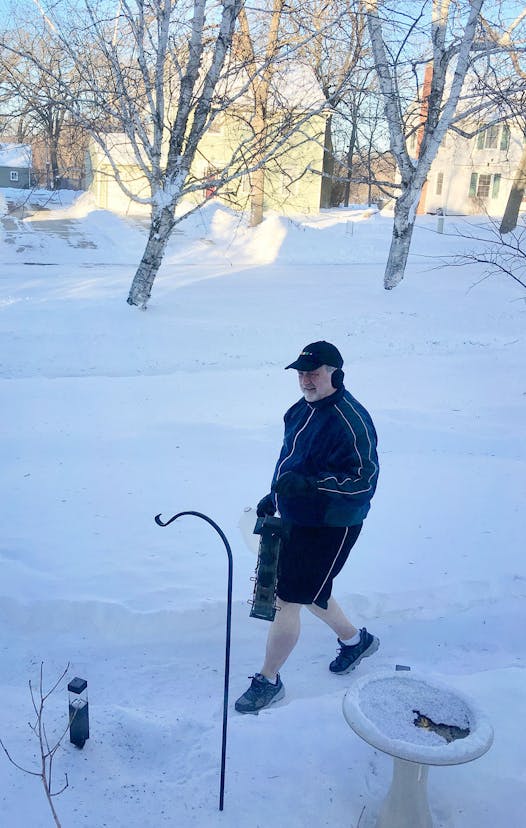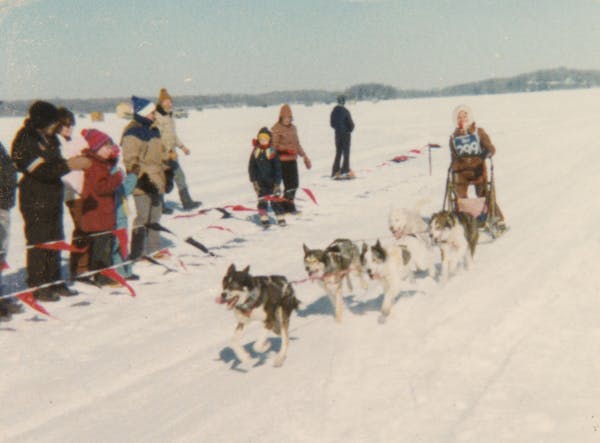I recently was driving through town when a flash of white caught my eye. The temperature was well below freezing, but this was not freshly fallen snow or the glare off a patch of ice. It was the pasty skin of some European-descended legs.
Yes, it was a person wearing shorts.
You've seen them. You've marveled. You've shaken your head. But have you wondered what goes through theirs?
Let's state the obvious: Winter is cold. Clothes keep us warm. Yet every year a stubborn subset of people across Minnesota venture outdoors in their summer finest. If pressed, they'll say it's not that cold.
It is that cold. As the Norwegians say, there's no such thing as bad weather, only bad clothes. Shorts in winter are bad clothes. Why are these people so resistant to the laws of thermodynamics? To the weather? To the world?
A few years ago, I wrote a book about culture-bound syndromes, or mental illnesses that occur in some cultures but not others. One that comes up in the literature was called "pibloktoq," also known as "arctic madness" or "polar hysteria." It was reported by a handful of Western explorers and anthropologists who spent time among the Inuits in the far north. "During the attack," reads the description in psychiatry's Diagnostic and Statistical Manual-IV, "the individual may tear off his or her clothing."
In his 1910 account, "Hunting with the Eskimos," Harry Whitney wrote about several attacks he witnessed: "Tukshu began suddenly to rave upon leaving the boat. He tore off every stitch of clothing he had on, and would have thrown himself into the water of the Sound, but for the restraint of the Eskimos." Another case: "Tongwe was again attacked by problocto [sic]. She rushed out of the igloo, tore her clothing off and threw herself into a snow-drift."
To me this sounded only slightly less extreme than our version of winter madness. But anthropologists have yet to study the condition here, so we should decide what to call it: Stifling slacks syndrome? Thermal thread disorder? Lower limb lunacy?
"These year-round shorts-wearers are an interesting breed," said Deirdre Clemente when I called to ask about the history of legless garments. "They're like their own weird cult. They're their own breed of fashion renegade. Who are these people? I'm obsessed with them."
Clemente is the author of "Dress Casual: How College Kids Redefined American Style" and the world's foremost expert on shorts. She said they're particular to American culture, and became popular with the rise of "casual" clothes in the 20th century, first during the 1920s bicycle craze, and again in the 1940s with the rise of Bermuda shorts, but most importantly with the "shorts protest" at Dartmouth College in 1930 centered on the look's "anti-fashion and anti-formality." The shorts protest made national headlines. Today they still retain some of that ethos, signaling things like youth, freedom and egalitarianism.
"Casual clothes are the uniform of the American middle class," Clemente wrote in Time magazine. "And in America, nearly everyone wants to put [them] on because nearly everyone considers himself or herself to be middle class."
But in winter? As Clemente put it: Who are these people? In the service of anthropology, I decided to track down some of these middle-class fashion renegades, in order to piece together a fuller picture of the members of the (cargo?) shorts cult.
The first person I called in my field research was Mike Ellingsen (full disclosure: my uncle) a longtime resident of Blue Earth, Minn., who recently relocated to Iowa. Ellingsen told me he wears shorts every morning on his walk and while doing chores outside (like snowblowing). He claims that shorts are "more comfortable," though after his shower he changes into "normal clothes."
"I'm pretty well-insulated," Ellingsen said. "But once it gets below 20, I've got to put on long pants; otherwise my legs turn red and chapped and dry. I know I've worn them below zero, but I've paid for it. Freezerburn."
Bruce Okeson is another subject. The post office veteran said he also feels more comfortable in shorts down to around 25 degrees. He said they help him thermo-regulate.
"You're out there, and you're walking all the time. You get lathered up, and your heart rate gets going. So it's my way of cooling down," Okeson said. "I don't wear gloves or a hat all year, period. I'm just hot blooded. If my torso is warm, I'm fine the whole day."
Asked if Okeson considers it a failure when he has to put pants on, he said, "A little bit." Last year, he made it to the first of January. By the end of February, he's usually back in shorts.
Mel Peterson is another shorts-wearing mail carrier, in Minneapolis. Once he made it every day of the year except one. He said that he doesn't like the restriction of pants, and that it's just more comfortable moving around in shorts. He's undeterred by the hecklers who yell "Get some pants!" His record, he said, is minus 21 degrees, though he admitted his temperature baseline is creeping up.
"As I get older," Peterson said, "my cutoff gets higher."
But Eric Salverda (who works indoors) when asked if such a line exists, said, "I haven't found it."
Salverda wears shorts every day of the year, barring his daughter's wedding and the odd funeral. He teaches middle school social studies at St. Paul Academy, and started wearing shorts 24 years ago when his fifth- and sixth-grade football team made it to the playoffs. He told them he'd keep wearing shorts until they lost, but they made it all the way to championships, and Salverda just never went back to the fully clothed lifestyle.
"I'm a pretty hairy guy," Salverda said, "so the pant leg rubbing against the hair on my calves feels weird. I'm much more comfortable in shorts than I am in pants. This is just who I am."
All the short-wearers I interviewed appeared to be in full possession of their faculties. Maybe it's the extreme climate that elicits such an extreme behavior. Their quixotic attempt to cling to summer seemed both ridiculous and rebellious, crackpot and courageous, a kind of middle finger at both The Man and Winter. Perhaps insane weather requires an insane response.
One day in December, I was at home when I saw another flash of white. I turned to see my 11-year-old daughter in shorts, heading for the front door.
"Where are you going?" I asked.
"Outside," she said.
"In shorts?"
"Yeah," she said. "Why?"
"It's winter."
"I know."
I thought about arctic madness and frostbite. I thought about pneumonia and what the neighbors might think. I thought of all the things I could say. But in the end, I just sighed.
"Have fun," I said.
She already was out the door, running through the snow.
Frank Bures edited a new anthology of Minneapolis writing, "Under Purple Skies." He lives in Minneapolis.

Is the east side the best side in high school baseball? Poll has an answer.
Spanish judge freezes a bank account of Piqué's company amid probe into Saudi deal to host Super Cup

Jamal Murray sinks shot at buzzer to cap 20-point comeback and lead Nuggets past Lakers 101-99




